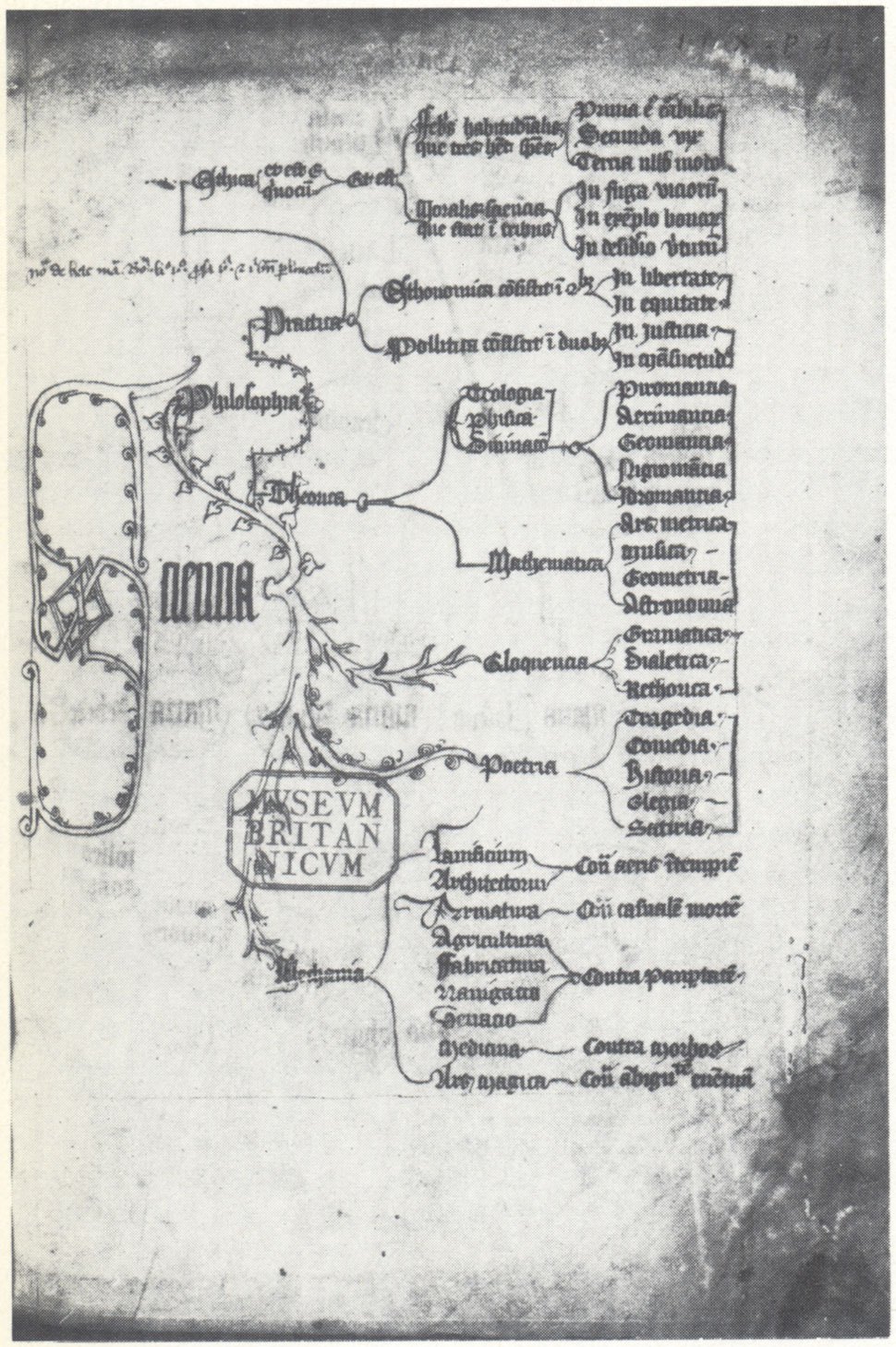Peter of Poitiers, Arbor historiae, Divisio scientiae

ca. late 14th century, but originally ca. late 12th century
Evans, Michael W. “The Geometry of the Mind.” Architectural Association Quarterly 12, no. 4 (1980): 32–55.
https://www.she-philosopher.com/gallery/infotrees_medieval.html
Divisio scientiae, setting out the parts of learning.
Sciencia divides into philosophy, eloquence, poetry and the mechanical arts. Philosophy subdivides into practice and theory; practice breaks down into ethics, economics and politics, which are further analysed; likewise theory, whose four parts are theology, natural science (physical), divination and mathematics. This last is made up of the quadrivium; eloquence furnishes the verbal arts of the trivium. For sources and analogues of this divisio, see the works cited in note 26 above. The stemma prefaces a compendium of 12 tables setting out religious concepts, often presenting parallels between two or more topics; on these compendia, see Saxl, op cit note 48 above, pp. 107–15.
London BL MS Roy 1 B X, fol 1r Compendium of tables; Peter of Poitiers, Arbor historiae; tables of lections and Psalms; appended to earlier MS of the Bible. England, late fourteenth century; 43 fols 11¾ x 8¼ in.
Description in Royal MS catalogue cited in note 84 above.
(photograph, British Library)
| Created: 08 Jul 2016 | Modified: 08 Jul 2016 | History | Markdown | Permalink |
- Tags:
